Hail Marys and Shattered Dreams: An Avalanche of Solar Panels Coming Soon to a Landfill Near You
Hail No to recycling: not feasible nor economical
Hail No!
The aburdities surrounding solar farms are coming in fast and furious, kinda like drinking out of a power washer nozzle on the pinpoint setting.
The solar panel disposal issue recently gained the spotlight again as megatons of panels are coming offline, exacerbated by hail storm demolitions of solar farms.
One conundrum is that there is now a massive overabundance of waste glass bottles and beer cans to recycle, as many Americans continue to drown their Biden sorrows in libations, thus giving solar panels even more than expected competition for their scrap value.
Most recently David Blackmon published a piece called What Happens When Texas Hail Meets China Solar describing the demolition of a solar farm by a hail storm in Fort Bend County, TX. The 350 MW operation on 3300 acres is called “Fighting Jays Solar Farm” and is now likely a total loss as solar panels are difficult and non-economical to recycle, but conveniently inexpensive to landfill.
Another related interesting companion article by Thomas J. Shepstone appeared shortly thereafter, entitled All Hail Solar Boondoggles and the Grifters Behind Them!, where Thomas outlines the high hail damage risks associated with that particular area of TX, and asks why anybody with half a brain, on God’s Green Earth, would put a solar facility in a such a high risk zone??
Above: Butterflies and Unicorns before hail obliteration of Fighting Jays
Above: SOL after savage pounding: Video of Fighting Jays Fort Bend Texas Trauma (click)
The hail risk zones are no secret to anyone who lives near or in one, per FEMA and NOAA data. Further, is it not really a secret that the roofing industry in TX has been kept quite busy for many many years, as hail damaged roofs are a commonplace occurance after solid H20 golf balls at terminal velocity impact shingles and sheet metal. Ya think the solar crowd would have learned about placing solar farms in these high risk areas? Not in the equation, solly. This is just another episode of “follow the money”.
USA hail risk chart from Cowboy State Daily
The demolition of solar panels by hail in these high risk zones has generated reverberating guffaws and wonderment amoungst the common sense locals in terms of the gross negligence of panel placement in Hail Mary Zones, especially in light of the umpteen years of history of damage wrought upon houses and cars by hail. Locals are now also very concerned about leaching of toxic metals into local groundwater and watersheds, as much is hidden from public view in terms of panel composition (cadmium telluride vs silicon) and other details.
Hailish Insurance Losses
GCube Insurance, an underwriter for renewable energy has released a report titled Hail No! Defending Solar from nature’s cold assault that is based on data collected by GCube over the past five years. The report shows that hail claims now average around $58.4 million per claim and account for 54.21% of incurred costs of total solar loss claims being attributable to hail. This is creating a gap between the insurance requirements for solar projects and what is available in the market, leading to project delays and cancellations.
Above: NOAA data showing hail zones and size of hail - It doesn’t take a genius, right? Or does it?
Above, Hail Alley: baseball-sized hail smashed into panels at 150 MPH and destroyed a solar farm in Scottsbluff, Nebraska: all panels went to the dump. Credit: Cowboy State Daily
In this article I also wish to give a shout-out to co-author and a True Texan, JF, who is a leader in grass roots and common sense opposition to solar and wind power in Texas.
JF has shared that hail storms in Midway, TX, damaged 400,000 + panels just a few years ago; and no one can answer the question of what happened to them, except for the insurance companies who stood up and paid attention as it cost them dearly. Dump run!
TX is yet again in the spotlight, facing a mega-mega-avalanche of solar waste, as JF reports that the present interconnection list on ERCOT projects 500 million installed solar panels in Texas in the next 10-15 years, which does not include rooftop, or already installed operating capacity.
Why? Why? Why? We ❤️ TX
Hail No! to Recycling
Solar panels are extremely difficult to recycle due to physical and chemical constraints and economics. Local dumps, scrapyards and landfills are bracing themselves to absorb the avalanche of solar panel waste now and in the future. Space and cost challenged landfills cannot absorb such volumes, so panels will need to be hauled by diesel truck to landfills with more open space and lower tipping costs, just like wind turbine blades.
By 2050, there could be 80 million metric tons globally of solar photovoltaics reaching the end of their lifetime, with 10 million metric tons in the United States alone—or the weight of 30 Empire State Buildings according to the National Renewable Energy Laboratory (NREL).
This is because typical solar panel in-service lifetime is much shorter than the advertised theoretical 20-30 years, and the taxpayer subsidized propagation of solar panels has greatly increased over the last 15 years. Without the subsidies, solar uptake would be far less. Just like gigantic wind turbines, the direct cost of recycling is the only part of the end-of-life burden. Panels are bulky and usually installed on rooftops, so specialized labor is required to detach and remove them, lest they shatter before they make it onto the haul away diesel truck.
As reported by David Blackmon and the IER, wind turbines and solar panels are aging prematurely, and exhibit lifetimes that are 30 to 50 % less than advertised, as many are coming offline and heading for the scrapyard after only 10-15 years of service.
Robert Bryce also recently illuminated the inordinate amount of your taxpayer dollars used for solar subsidies, which has catalyzed a frenzy of greed in the build out of large solar farms nationwide, literally throwing caution to the wind, damn the hail.
Solar panels and ancillary parts also fail in service, such as inverters, especially those from Chinese companies that have flooded the market with inferior quality products. Short circuits and failures are not uncommon, which can lead to an entire home burning to the ground, similiar to EVs in a garage or on a container ship.
Burned out Chinese panels. Warranty ? Rotsa ruck and SOL.
Another important trend feeding the solar panel dump inundation is that people are replacing solar panels early to take advantage of next generation technology and receive taxpayer incentives before they run out.
Per PV magazine, “Solar panel recycling in the US — a looming issue that could harm industry growth and reputation” costs an estimated $20–$30 to recycle one panel. Sending that same panel to a landfill would cost a mere $1–$2.
We got Chemistry
The lack of recyclability also hinges on the fact that while panels do contain a number of useful and valuable metal chemical elements, the metals exist in minute quantities, as the bulk and mass of a panel is mostly low-value glass with aluminum framing. As mentioned prior, note that there is plenty of waste glass bottles and beer cans to go around, so solar panels are not really a hot item to recycle.
Further, panels are sealed to prevent moisture and oxygen ingress and comprise multi-layer structures, so they are expensive to “dismantle” and extract value from the dilute chemical elements within. Specialized equipment and workers are needed to dismantle a panel and separate the aluminum frame and junction box from the panel without shattering it into glass shards. Specialized furnaces are needed to heat panels to recover silicon, which requires burning even more fossil fuels.
To give you some indication about the recycling disconnect, First Solar is the sole U.S. panel manufacturer with an up-and-running recycling initiative, which only applies to the company’s own products at a global capacity of two million panels per year.
Why is this?
High efficiency USA built First Solar thin film solar panels comprise highly toxic cadmium and tellurium, therefore First Solar panels are deemed to be hazardous waste. Because of this, First Solar is forced to recycle these panels to protect from liability, and yes, possibly the environment and people’s health.
Although toxic elements such as Pb, Cd, Te, and Se in a panel are in very low concentrations (except for First Solar), solar panels are classified as hazardous materials in many states, and thus require expensive restrictions on packaging, transport and storage. Some governments still classify silicon based solar panels as hazardous waste, due to the small amounts of heavy metals (cadmium, lead, etc.) they contain. This classification carries with it a string of expensive restrictions — hazardous waste can only be transported at designated times and via select routes, etc. Lotsa ruck in Cali !
Below is a diagram showing the chemical elements in a panel, most very dilute and hard to extract in any practical way:
Bottom line: if a hermetically sealed panel is damaged, it does not pay to de-encapsulate and try to extract milligrams or a few grams of dilute metal elements. There is no shortage of scrap glass or aluminum, so that is a non-starter.
But, a smashed panel exposed to the elements and rain could leach toxic metals into the environment.
Basically SOL.
Bonus SOL Section
1. Car Hail Damage
Take a ball-peen hammer to a car: have you seen the ball-peen hammer effect on a car after a hail storm? It’s quite a sight, and heart wrenching for a fossil fuel burning dinosaur guy such as myself to see all those cars destroyed (except for EVs).
Or have you experienced the travel anguish after you arrived at Austin airport and find that there just ain’t no mo rental cars available, ‘cause ice golf balls dinged all the rentals?? Not fun.
Above: dinged and ball-peened
To quote an article from KVUE TV about hail in TX and car damage:
Central Texas drivers with hail damage now facing rental car shortage: "We are number 1,800 on the line with Enterprise, which our insurance has to go through," Round Rock resident Martin Wise Jr. said.

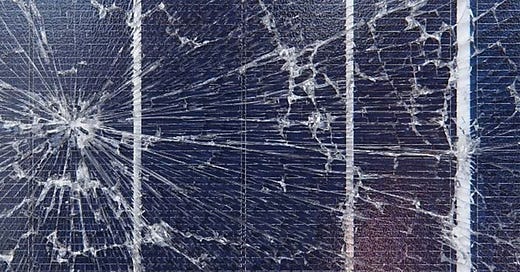






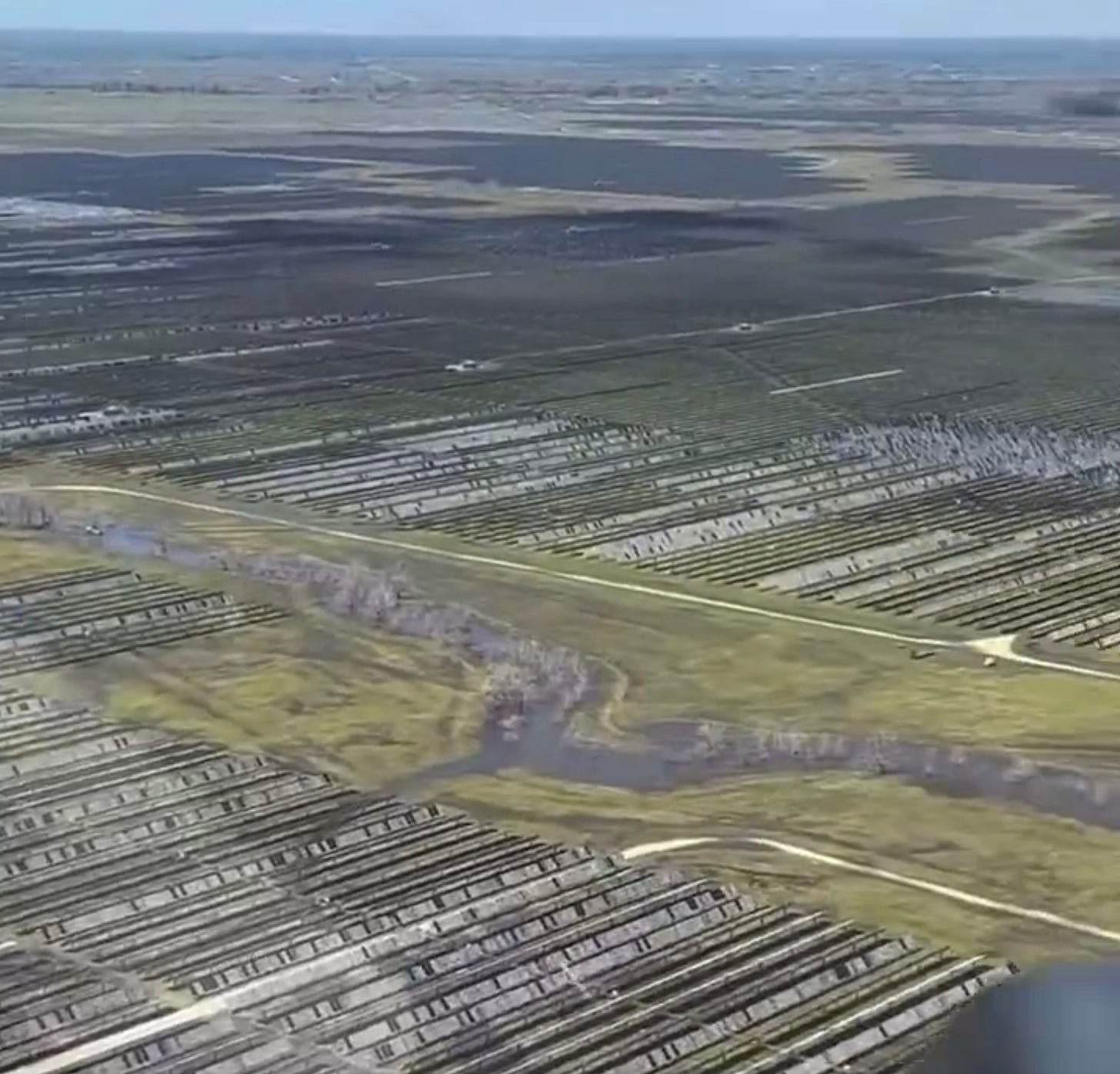
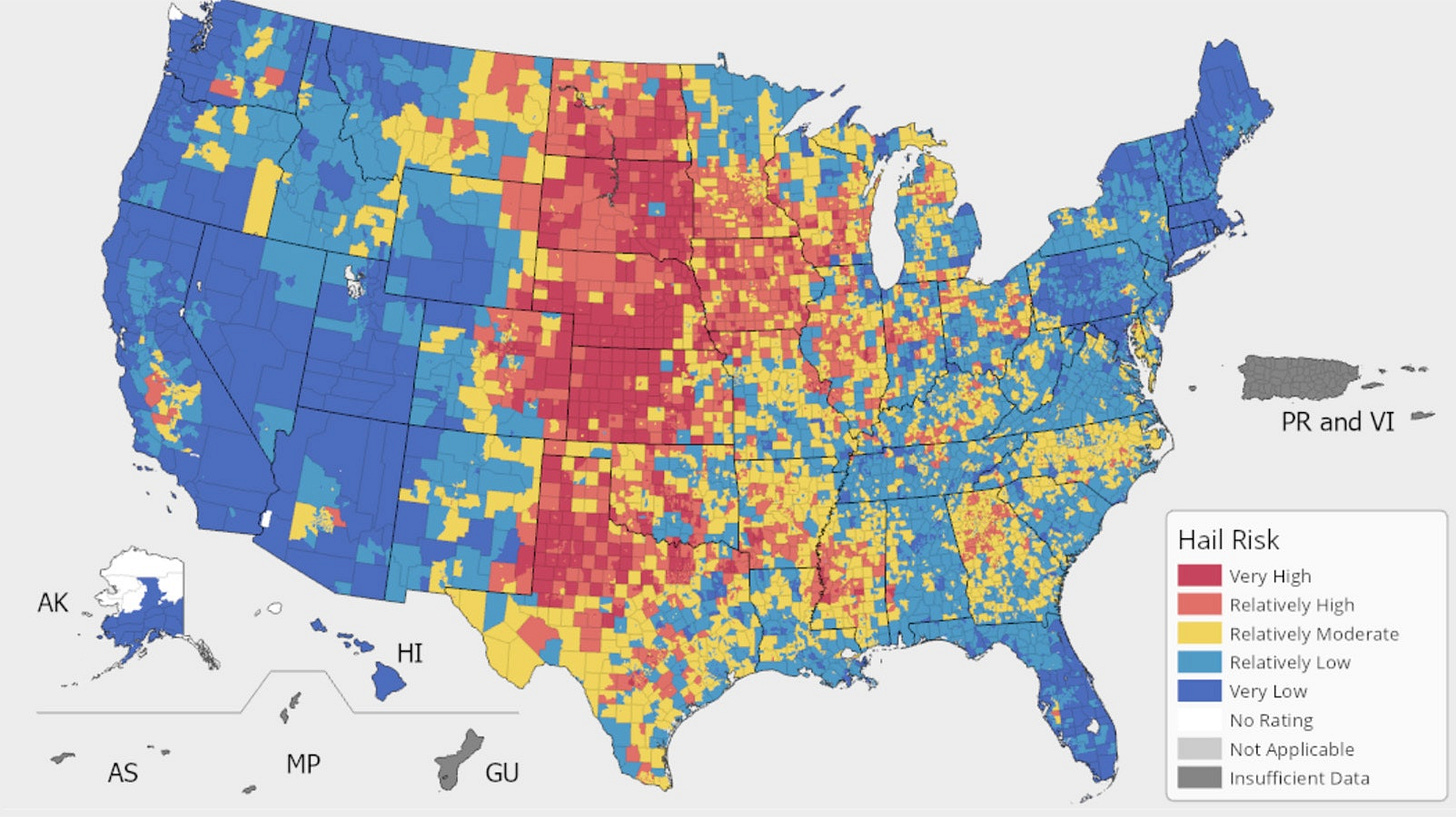

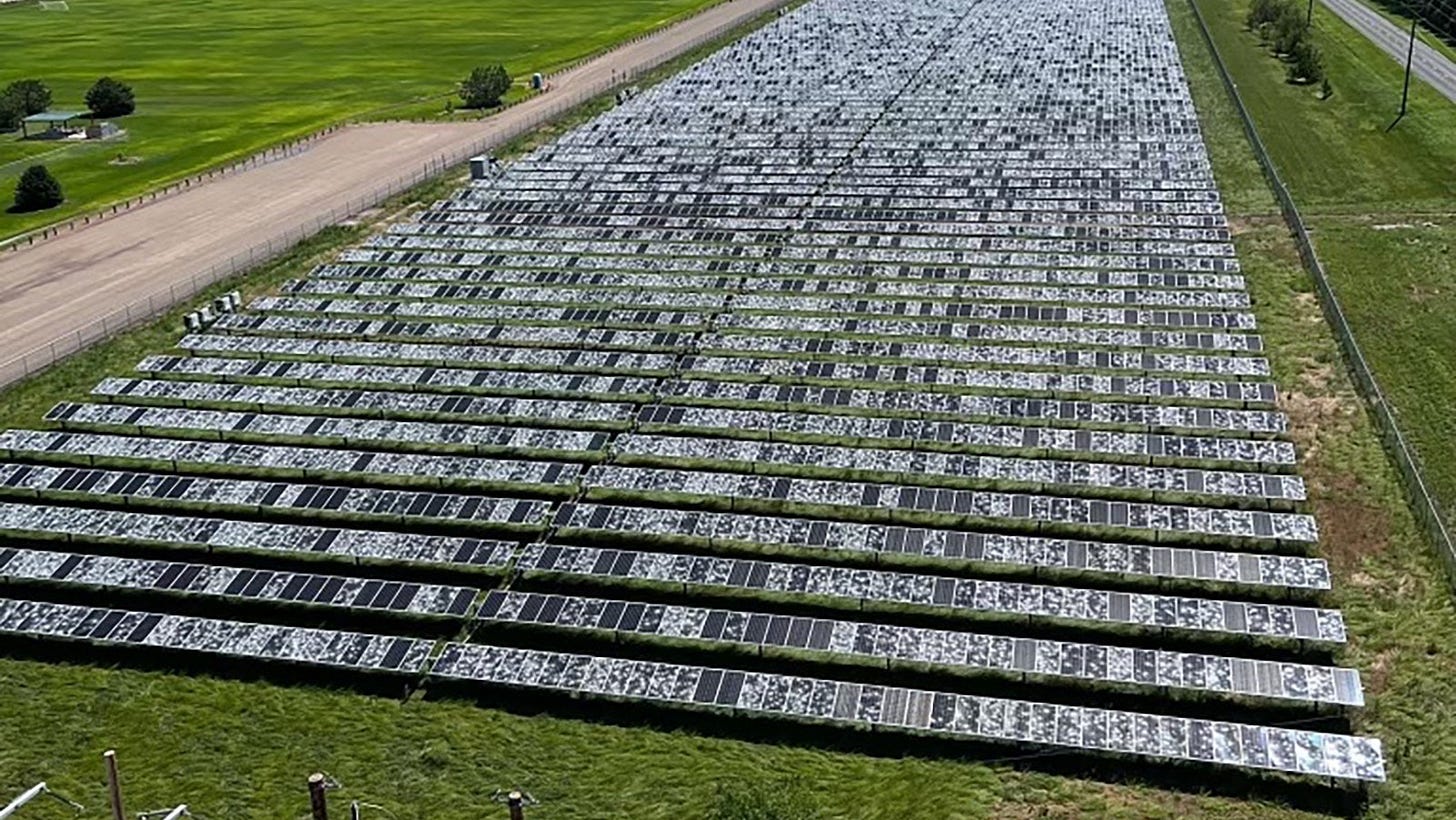

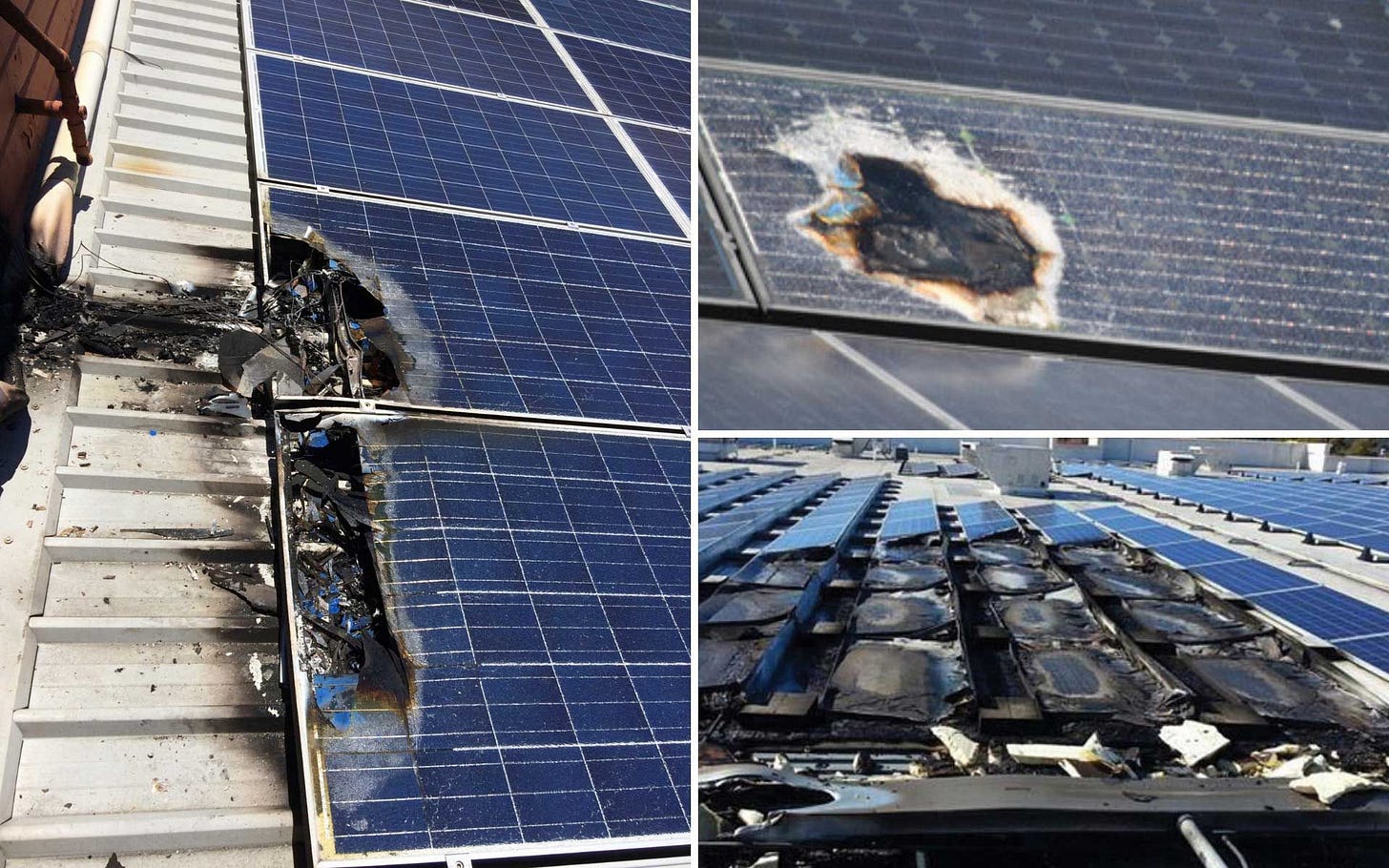

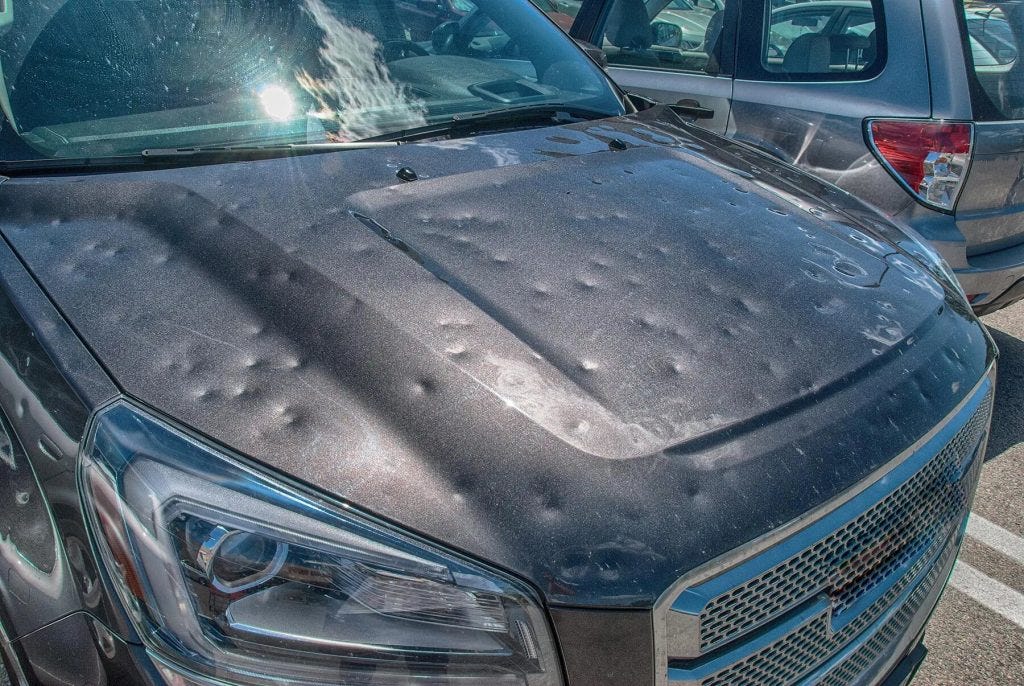
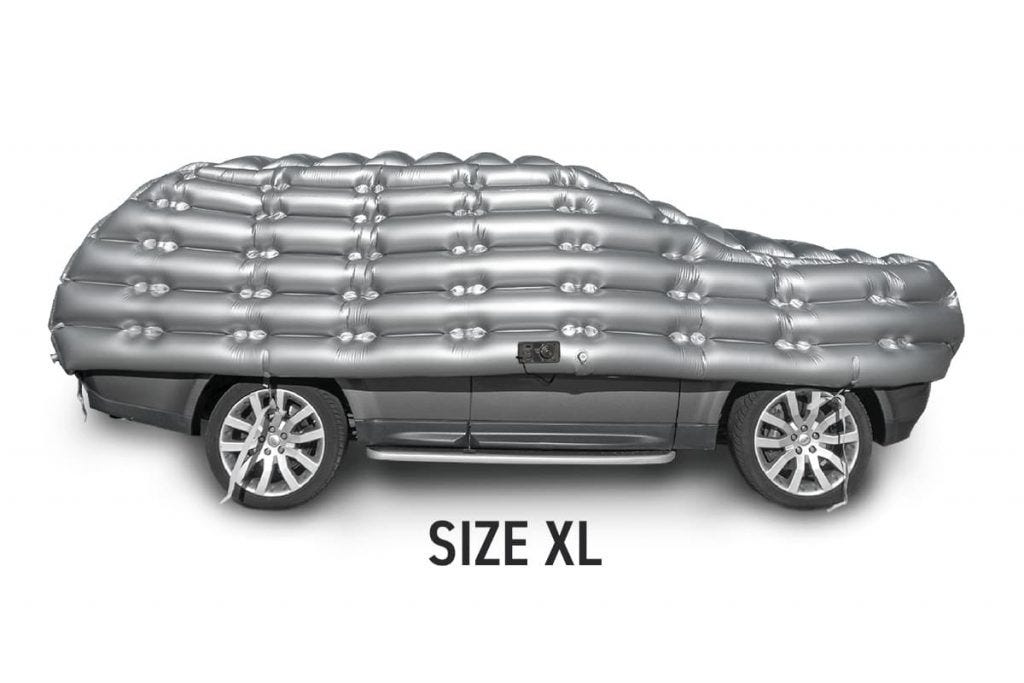
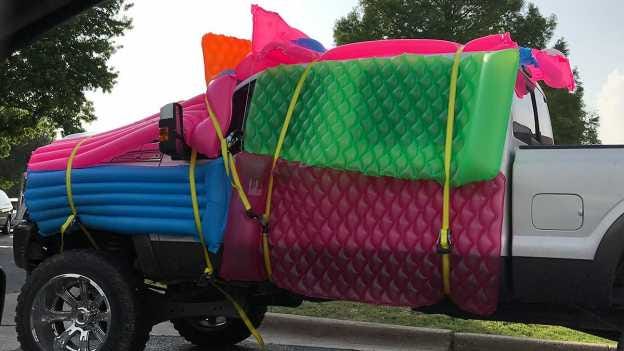

Thanks for the mention here - and writing a great article on hail damage and recycling.
As you all know hail is quite prevalent here is Texas. My poor car has been hit 3 times when on the road and my truck once, no condoms available then.
Yes this story in Fort Bend County has really hit the news. The video is quite disturbing. Link below. https://fb.watch/r7P5wdImcc/
Another site that has flown under the radar is a site, BT Kellam industrial solar facility in Ben Wheeler. It had hail damage and 6 times fire marshals were called to the site to extinguish fires, when they tried to start up again. They are having trouble getting replacement panels. Luckily not much damage has been done because of the fast response. From the report I read it was Sep/Oct last year.
Here in Erath County we had 1 windmill fire last year, that I know of, many go under the radar unless you are watching the fire reports. At least windmill fires are easy to spot!
The recycling also remains an issue with some states declaring solar panels as universal waste, California, Hawaii, already have and New York and North Carolina I believe are working towards it too if not already approved. Next may be Texas.
We have a bill on the books SB 1290, supposedly looking into the installation, operation and decommissioning of wind, solar and batteries. On the first conference call it seems their direction will mainly be recycling, I am hoping the outcome will not be a bill to approve universal waste for solar.... but that would be my guess. Do a study to fit the outcome... (I have little faith in our government or universities on this subject!)
When you think recycling you think taking the panels apart and pulling out the good stuff and recycling it all. I didn't ever give it much thought, but as usual things are never that simple. Your article shows how hard this is.
I learned that recycling to a recycle plant is reusing many of those panels and shipping them off to countries or people who wish to buy them - so more a resale shop! You can now find used panels online, if you are brave enough, or cheap enough! The recycle company said they could handle 1 million panels - but I image it was speaking more of resale, than recycle, especially since they were talking about decommissioning not damage - different story!
One other interesting point I read was that Germany tried to change the regulations on solar panels coming from China to not use lead solder, apparently it didn't work, it was the cheapest way to do it, so no changes. The diagram on panels you showed, and all others I have seen do not show lead as being involved in the manufacture. Interesting- but there is a study from Stuttgart University on the leaching of lead and cadmium together.
So this all takes us back to what I have been saying for years now - solar superfund sites all across the county. The companies will walk away - the owners will eventually walk away, the counties will own them and that means - you, me and the rest of the country - this is a train wreak in slow motion and not enough people are seeing it yet! No laws to protect us now and none then!
Incredible post. Keep up the good work!